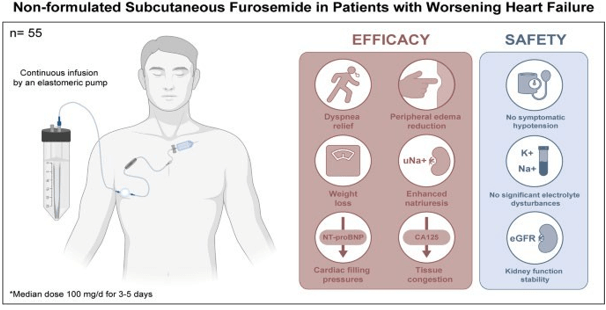A nurse is collecting data from a client who has heart failure and is taking furosemide.
Which of the following findings should indicate to the nurse that the medication is effective?
Decreased hemoglobin level
Increased urinary output
Decreased BUN level
Increased weight of 0.91 kg (2 lb)
The Correct Answer is B
b. Increased urinary output.
Furosemide is a diuretic medication that helps remove excess fluid from the body by increasing urine production and output. In a client with heart failure, one of the indicators that the medication is effective is an increase in urinary output. This can help reduce fluid buildup in the body, which can improve symptoms of heart failure.

Nursing Test Bank
Naxlex Comprehensive Predictor Exams
Related Questions
Correct Answer is ["C","E","F"]
Explanation
c. Report suspected maltreatment to the appropriate agency.
e. Ask the client how the fracture occurred.
f. Conduct the interview with the client privately.
In a situation where maltreatment is suspected, it is important for the nurse to report their concerns to the appropriate agency. The nurse should also ask the client how the fracture occurred and conduct the interview with the client privately, without the presence of their child, to gather more information and assess the situation.
Correct Answer is C
Explanation
Assessing the client's ability to use the call light is crucial for their safety and well-being. If the client is unable to use the call light to request assistance, it increases the risk of falls or accidents when they attempt to move or perform tasks without assistance. By determining the client's ability to use the call light, the nurse can ensure that appropriate measures are in place to enable the client to call for help whenever needed.
Applying rubber-soled slippers before ambulation helps to provide better traction and reduce the risk of slips and falls, but it can be implemented after assessing the client's ability to use the call light.
Moving the bedside table closer to the bed is helpful for the client to access personal items without the need to reach or stretch, but it is not the highest priority among the given options.
Creating a schedule with assistive personnel for hourly rounding is important for regular checks on the client's safety and well-being, but it can be arranged after assessing the client's ability to use the call light.
Whether you are a student looking to ace your exams or a practicing nurse seeking to enhance your expertise , our nursing education contents will empower you with the confidence and competence to make a difference in the lives of patients and become a respected leader in the healthcare field.
Visit Naxlex, invest in your future and unlock endless possibilities with our unparalleled nursing education contents today
Report Wrong Answer on the Current Question
Do you disagree with the answer? If yes, what is your expected answer? Explain.
Kindly be descriptive with the issue you are facing.
